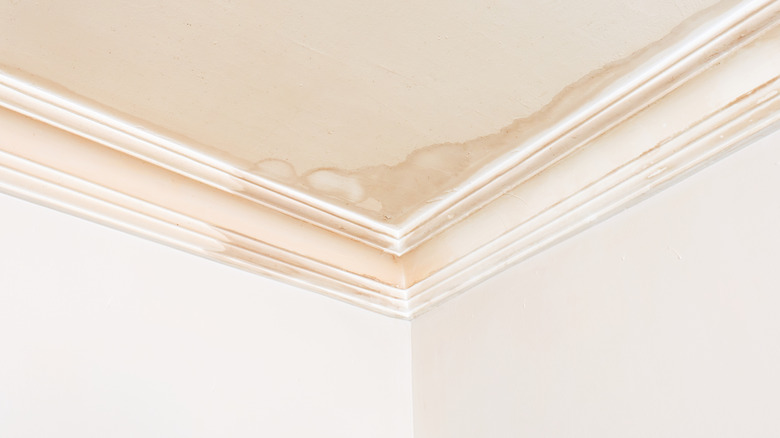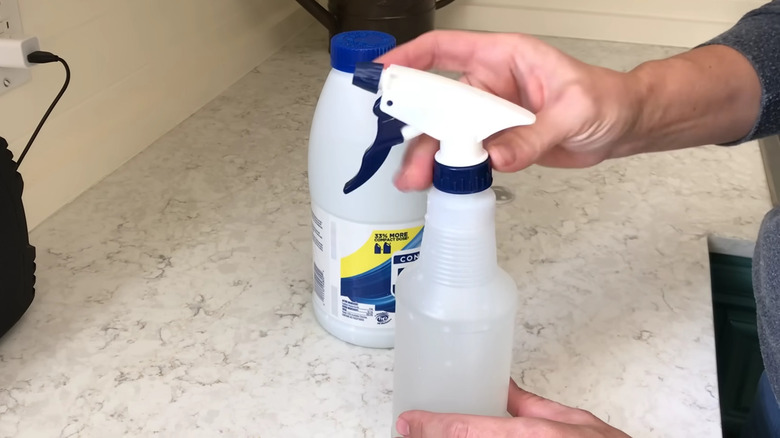Removing Ceiling Water Stains Is A Breeze With These Two Common Household Staples
Whether left behind due to a leaking roof or HVAC issues, those yellow or brown water stains on your ceiling can make a place look dingy and dirty. Two household staples, bleach and water, can make them go away so you are no longer confronted daily with the ugly sight once you address the root cause. By mixing bleach and water well, you create a stain remover that will let you zap the marks right out of your ceiling. Then, once it's dry, you can safely paint. For this simple DIY treatment, you'll need a bottle of bleach, a spray bottle, access to a water faucet, and a clean cloth.
Bleach is an effective choice compared to other cleaning options, as it not only removes the discolored areas but also makes the surface less susceptible to mold or mildew. When you use this combination, it's much more cost-effective than painting over your entire ceiling just to hide one stain in particular. Bleach is quite affordable at about $8 a bottle, depending on size. Plus, painting your ceiling without addressing the stain itself with a proven remover means that it will eventually bleed through the new coat, especially if you use standard paint.
To get your stain completely gone, you must first remove it and then treat with a stain-blocking primer. This is the best primer type for covering nasty water stains, but it needs to have a prepared surface. Say goodbye to those stains for good by mixing up the right bleach solution.
Using bleach and water to remove your ceiling water stains
It couldn't be easier to erase ceiling water stains with bleach and water. Mix the two ingredients in a 1-to-3 ratio, or one part household bleach to three parts water. Once they're thoroughly combined, shake the spray bottle, and then apply the solution directly to the stain. Be careful spraying, and consider covering the surface underneath you with a tarp to protect any carpet or fabrics that may discolor. If you want to address mold or mildew, let it sit for a minimum of 10 minutes for the best results.
Depending on the amount of spray, you may need to dab at it with a clean cloth to avoid dripping. Blot as needed, and then rinse the bleach away with clean water. Once the spot is dry, you can easily paint your ceiling with the primer and paint.
Remember to use caution when working with bleach. Always have proper ventilation, such as an open window, to avoid inhaling dangerous fumes. This is especially critical in tight spaces, such as a bathroom or closet. You should also wear protective gear, such as goggles and gloves, to protect yourself from accidental splashes when spraying.

